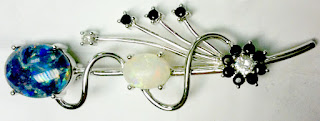 |
| The Rolex Prince Watch |
Harvey also left some labelled coat hangers and wonderful wool fabrics that have since been made into suits.
Watches have become a fashion accessory and for some a status symbol, others - just need to know the time. Which has made me wonder when man first had the need to tell the time, just going to google that question.......It seems that our forebears invented methods to divide the day or the night into different periods in order to regulate work and for ritual/religious festivals. The lengths of the time periods varied greatly from place to place and from one culture to another. An Egyptian sundial from about 1,500 BC is the earliest evidence of the division of the day into equal parts, but a sundial couldn't be used at night so other methods such as water clocks (clepsydra), oil lamps and candle clocks were developed. Click here to read about sundials in detail and make your own - all very mathematical.
In 27 AD Hipparchus of Niceae, working in Alexandria, proposed dividing the day into 24 equinoctial hours. Equinoctial hours, are based on the equal length of day and night at the equinox, split the day into equal periods. However, ordinary people didn't adopt this for well over a thousand years. (The conversion to equinoctial hours in Europe was made when mechanical, weight driven clocks were developed). The division of time was further refined by another Alexandrian based philosopher, Claudius Ptolemeus, who divided the equinoctial hour into 60 minutes, using by the scale of measurement of ancient Babylon.
The first clock escapement mechanism appears to have been invented in 1275 and subsequently watches evolved from these portable spring-driven clocks. More detail to follow in future blogs.
In 27 AD Hipparchus of Niceae, working in Alexandria, proposed dividing the day into 24 equinoctial hours. Equinoctial hours, are based on the equal length of day and night at the equinox, split the day into equal periods. However, ordinary people didn't adopt this for well over a thousand years. (The conversion to equinoctial hours in Europe was made when mechanical, weight driven clocks were developed). The division of time was further refined by another Alexandrian based philosopher, Claudius Ptolemeus, who divided the equinoctial hour into 60 minutes, using by the scale of measurement of ancient Babylon.
The first clock escapement mechanism appears to have been invented in 1275 and subsequently watches evolved from these portable spring-driven clocks. More detail to follow in future blogs.
If you get a chance to visit the The science museum you can see a collection of early watches there.






